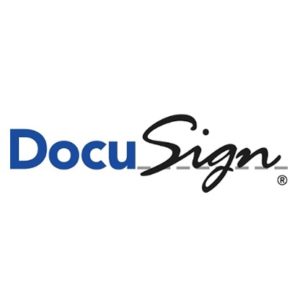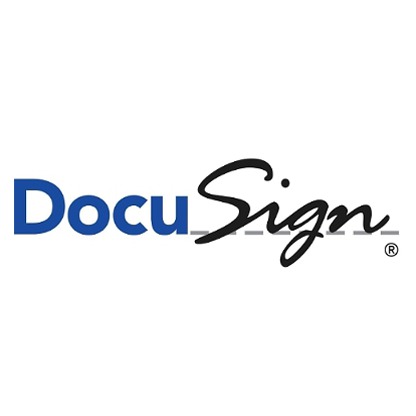Category: IPO research on software stocks
BigCommerce Holdings: Powering Online Sales
 BigCommerce Holdings (NASDAQ: BIGC), an ecommerce software company, is a recent addition to our Battle Road IPO Review & Stock Screen coverage. Founded in 2009, the company is headquartered in Austin, Texas, where it is led by Chairman, President, and CEO, Brent Bellm. For 2020, Consensus estimates call for $142 million in revenue, along with a loss of $1.01. The outlook improves in 2021, as analysts foresee the company producing $170 million in revenue, with a loss per share of $0.41.
BigCommerce Holdings (NASDAQ: BIGC), an ecommerce software company, is a recent addition to our Battle Road IPO Review & Stock Screen coverage. Founded in 2009, the company is headquartered in Austin, Texas, where it is led by Chairman, President, and CEO, Brent Bellm. For 2020, Consensus estimates call for $142 million in revenue, along with a loss of $1.01. The outlook improves in 2021, as analysts foresee the company producing $170 million in revenue, with a loss per share of $0.41.
BigCommerce debuted on the NASDAQ on August 5th, 2020, at an opening price of $24, in a 10.4 million Series 1 common stock offering, of which 7.9 million were sold by the company, with the remainder sold by shareholders. Following the transaction, the company has about $215 million in cash, with a net cash position of $144 million. At a recent share price of $83, the company spent little time as a small cap stock, and now possesses the remarkable market cap of $5.5 billion. Morgan Stanley and Barclays were lead book-running managers for the offering, with assistance from six other firms.
BigCommerce aims to provide the best SaaS ecommerce platform in the world for all steps of customer growth, with a focus on building online store fronts, and the infrastructure to manage them. In addition to developing the customer’s ecommerce site, BigCommerce develops cross-channel connections to other online marketplaces, social networks, and offline point-of-sale systems. The company provides free direct integrations with online marketplaces such as Amazon and eBay, search engines like Google, social networks including Facebook and Instagram, and point-of-sale platforms, such as Square, Clover, and Vend.
The company’s solution includes modules for checkout, order management, store design, catalog management, reporting, and hosting, with pre-integration into third-party services, such as payments, accounting, and shipping. The company claims that its customers’ stores are run on a single cloud base with a global, multi-tenant architecture developed for high levels of security, performance, and innovation.
When first founded, BigCommerce focused on targeting small businesses, but under new leadership, beginning in 2015, expanded its target market to include the mid-market, or companies with annual online sales between $1 million and $50 million, as well as large enterprises. In total, BigCommerce supplies solutions to roughly 60,000 online stores in 120 countries. About 75 percent of the sites BigCommerce serves are in the United State, and notable customers include Sony, Ben & Jerry’s, SkullCandy, and SC Johnson.
According to eMarketer, retail ecommerce accounted for roughly 10 percent of all retail spending in 2017. eMarketer projects that this number will balloon to 21 percent of global retail spending by 2023. The International Data Corporation (IDC) estimates that the worldwide market for digital commerce applications, or ecommerce platforms, was $4.7 billion in 2019, and is expected to jump to $7.8 billion in 2024. BuiltWith.com ranks BigCommerce as the second most utilized ecommerce platform in the world.
BigCommerce sells its platform through a monthly subscription model, with prices starting at $29.95 per month and increasing with business size and functionality requirements. In its fiscal year ending December 31st, 2018, BigCommerce recorded $92 million in revenue, with a net loss of $39 million. While revenue increased to $112 million in its fiscal year ending December 31st, 2019, its net loss grew to $43 million. The stock screens near the bottom of our Battle Road IPO Review Software sector coverage, carrying an EV/sales ratio of 31x projected 2021 Consensus revenue estimates.
DocuSign: The New Standard for Electronic Signatures
 Founded in 2003 by Court Lorenzini, Tom Gosner, and Eric Ranft, and headquartered in San Francisco, DocuSign (NASDAQ: DOCU) becomes the most recent addition to our Battle Road IPO Review Software sector coverage. For its fiscal year ending on January 31, 2019, Consensus estimates call for $624 million in revenue, and a loss of $0.04 per share. In its next fiscal year, analysts predict the company will generate $769 million in revenue with earnings of $0.12 per share.
Founded in 2003 by Court Lorenzini, Tom Gosner, and Eric Ranft, and headquartered in San Francisco, DocuSign (NASDAQ: DOCU) becomes the most recent addition to our Battle Road IPO Review Software sector coverage. For its fiscal year ending on January 31, 2019, Consensus estimates call for $624 million in revenue, and a loss of $0.04 per share. In its next fiscal year, analysts predict the company will generate $769 million in revenue with earnings of $0.12 per share.
DocuSign debuted on the NASDAQ on April 27th, 2018, in a 21.7 million Class A common stock offering, with 16.1 million shares coming from the company and 5.6 million coming from shareholders. Due to increased demand, underwriters fully exercised their option to purchase 3.3 million additional shares. With an IPO price of $29 per share, the company generated roughly $725 million from the offering, with roughly $563 million of the proceeds going to the company. Morgan Stanley and J.P. Morgan were lead book-running managers for the offering, with Citigroup, BofA Merrill Lynch, and Deutsche Bank as book-running managers, and JMP Securities, Piper Jaffray, and William Blair as co-managers. Recently trading at a share price of $60, DocuSign holds a market cap of approximately $9.3 billion.
DocuSign boasts the world’s top e-signature platform through its automation of the agreement process for individuals and organizations. Quicker, cheaper, and with less potential risk than old-fashioned paper agreements, DocuSign’s solution allows customers to securely sign agreements in minutes rather than days. This cloud-based platform grants users the ability to sign agreements from nearly any device, anytime, anywhere.
The San Francisco-based company is a global firm with hundreds of millions of users including over 370,000 companies as customers worldwide. These customers include seven of the top 10 global technology companies, 18 of the top 20 global pharmaceutical companies, and 10 of the world’s top 15 financial services firms. In addition to this, DocuSign serves many smaller organizations and individuals in nearly every industry.
DocuSign is integrated with over 300 applications, including partnerships with NetSuite, Microsoft, Oracle, Google, Workday, Salesforce, and others. Furthermore, their solution can be integrated into custom applications for each individual user. Due to this, DocuSign can be easily leveraged by major organizations, and one of the company’s largest clients is able to utilize the platform in over 300 unique cases within its enterprise.
DocuSign offers its platform in the form of subscriptions. There are a multitude of subscription options with different functionalities specifically tailored to customers’ needs. These subscriptions are sold to businesses through DocuSign’s partnerships and direct sales force. For smaller organizations and individuals, DocuSign uses its company website to acquire subscriptions.
DocuSign’s business model shows great potential, as the company has recently expanded its revenue while shrinking its losses. In the fiscal year ending January 31, 2018, the company posted $382 million in revenue, albeit with a loss of $115 million. The following year, revenue jumped 36 percent to $519 million, while its loss was cut to $52 million. Having raised roughly $563 million in company proceeds from its IPO, DocuSign’s strong post-IPO balance sheet features $820 million in cash and no debt.


